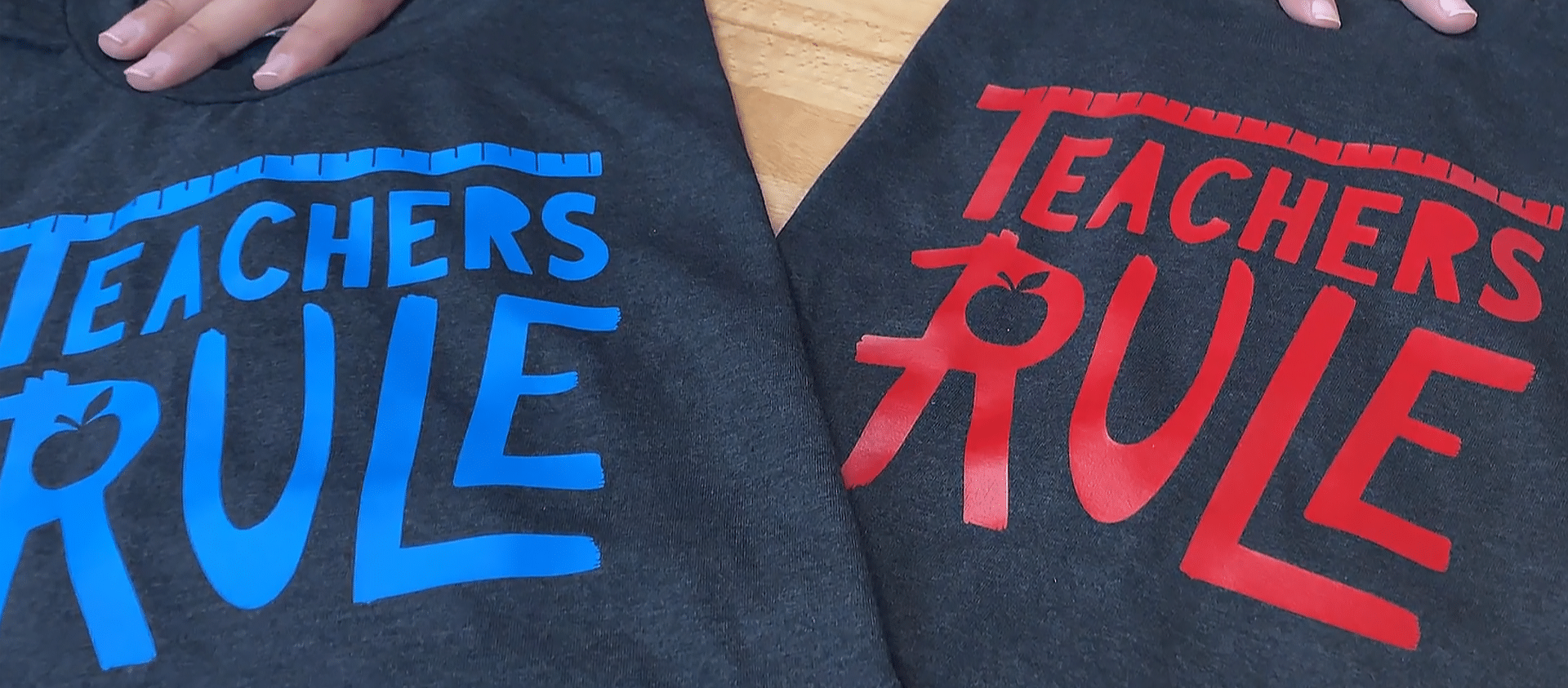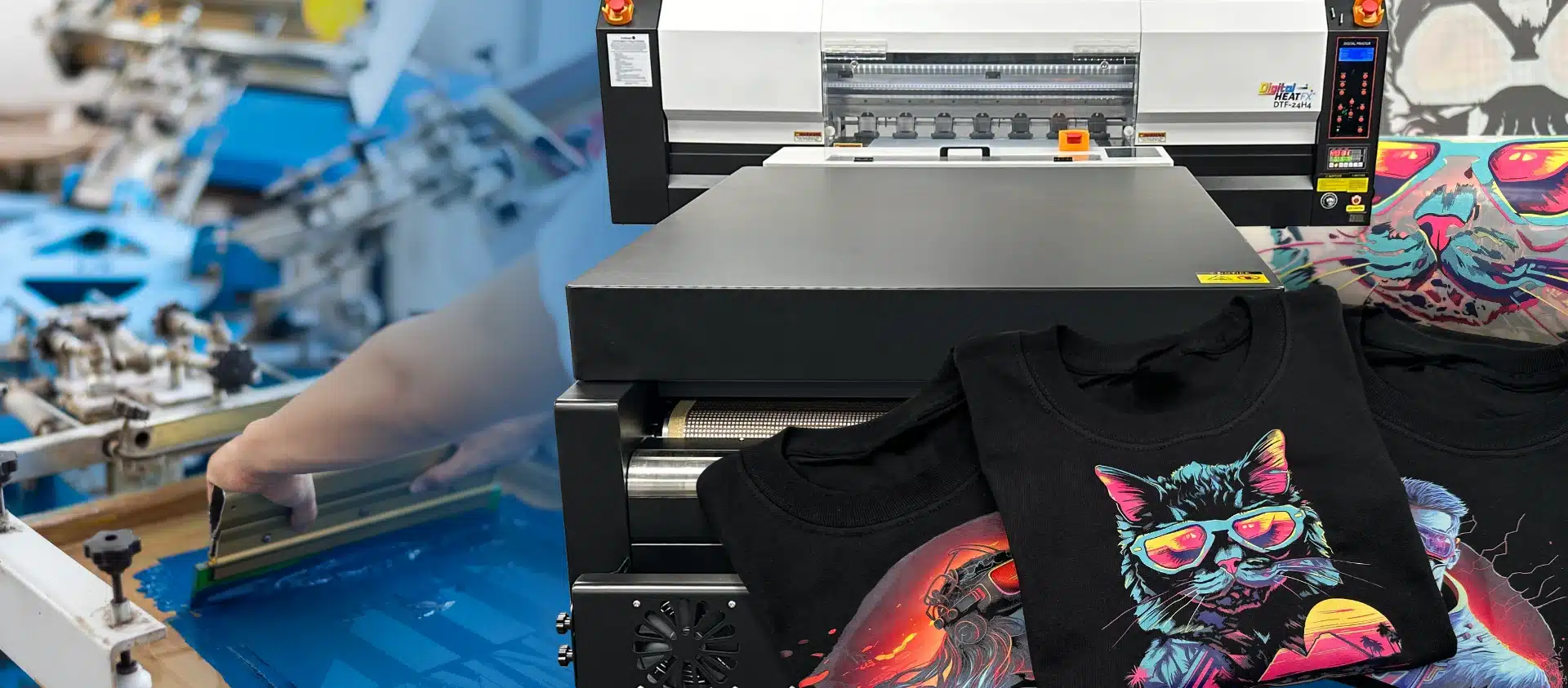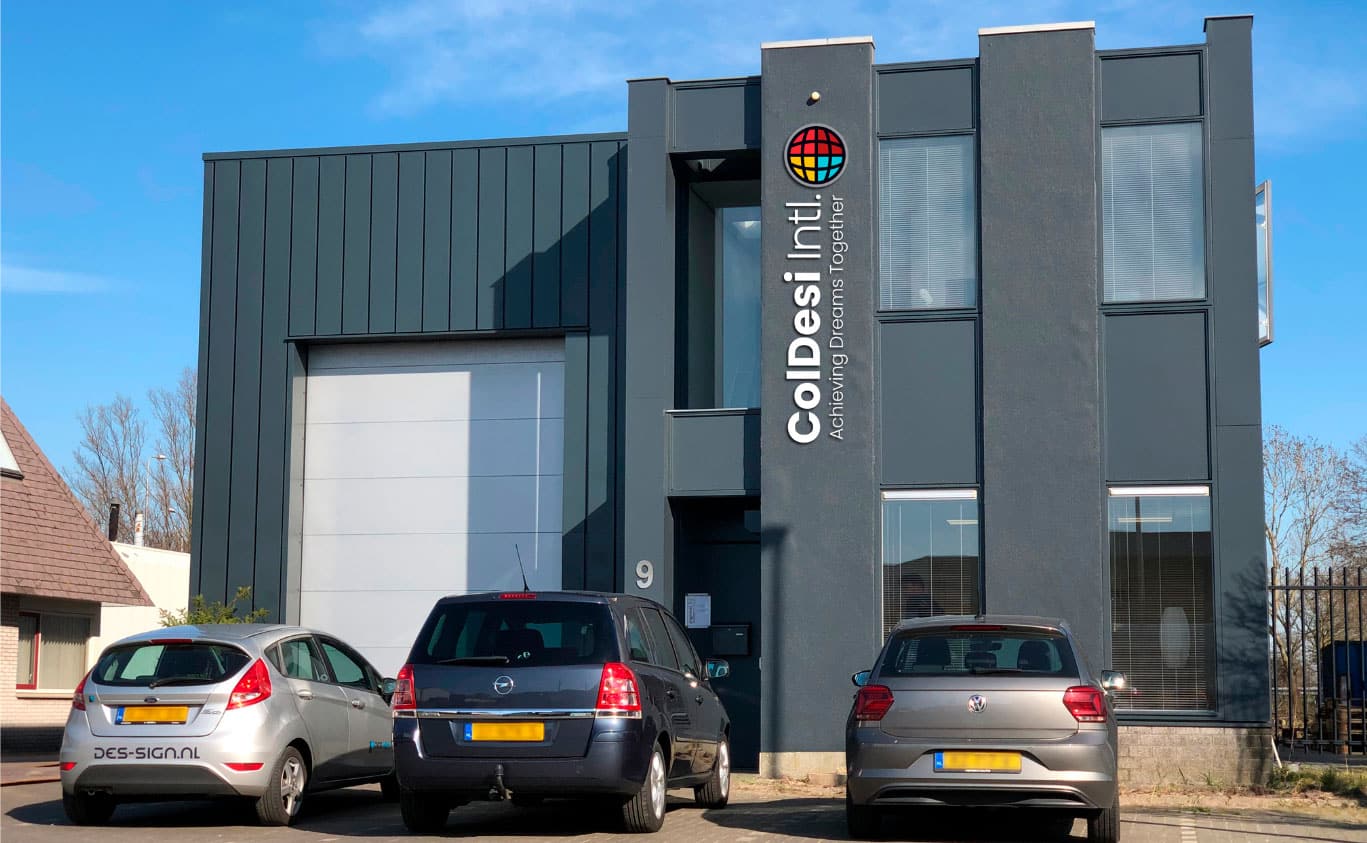Direct to film printers are the latest technology to challenge Direct to Garment (or DTG) printing for high-volume custom t-shirt business. business.
During this article, we’ll quickly go through what each one does. Then how they stack up in a head-to-head comparison.
Note: We’re not comparing the homemade or “shake-and-bake” version of direct to film printers. We’re talking High-End Commercial DTF Machines here.
Basic Differences between Direct to Film Printers and DTG Printers
The differences are easy to understand. You just need to know how each one works:
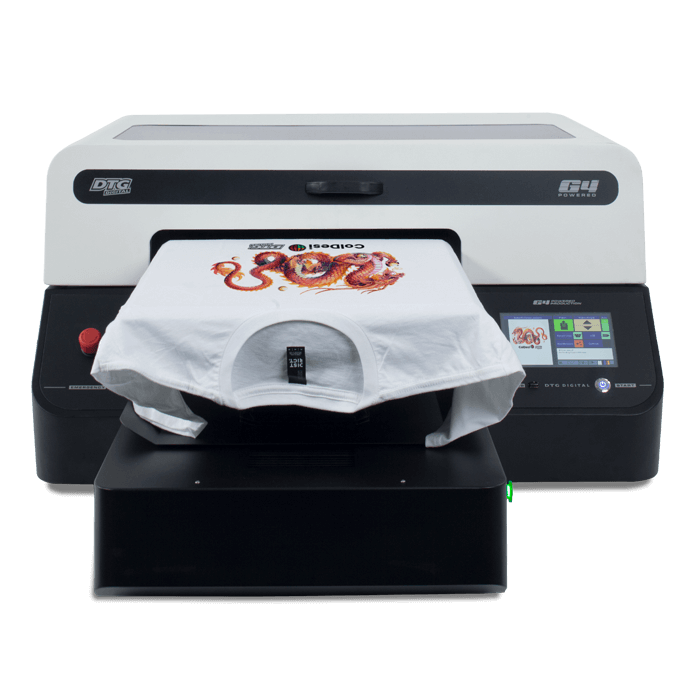
DTG Printers are "direct to garment” printers.
That means they print directly onto a t-shirt rather than onto a transfer. Which THEN must be heat pressed onto a shirt.
Typical direct to garment printers, like the DTG G4 or Epson F2100 for example, have a few practical limitations regarding the material they can print on. They do best printing on 100% cotton material or light-colored polyester.
They also have a multi-step process to produce the result.
Here’s what that process looks like:
Step 1: Pretreat the shirt
When printing with white ink, direct to garment printing requires you prepare the garment to accept that ink.
Higher volume shops will use a liquid pretreatment sprayer machine to do this.
Then you need to dry the pretreatment in a heat press for about :45 seconds depending on the liquids used. This “sets” the pretreatment.
Or you can also buy DTG Ready shirts that have already been pretreated, but this is less common.
Step 2: Print the Design
This is a simple and satisfying step! Because you load a t-shirt into the DTG printer directly and it prints ON the shirt. It feels good to watch a full-color image seem to magically appear on the shirt.
This works very much like loading a single sheet of paper in a color inkjet printer at home. You get to see the design on the paper [t-shirt] right away.
Normal print times range from 1 to 3 minutes per shirt.
Step 3: Cure the Shirt
When the ink comes out of the direct to garment printer it is still wet, so you’ll now need to cure the ink on a heat press.
A final heat press lasts for approximately :45 seconds depending on your ink set and the shirt material. It serves to dry the ink AND set the design into the material of the shirt.
What you Need with Direct to Garment Printing
Shop Set-Up:
- Direct to Garment Printer
- Heat Press - most custom t-shirt shops have TWO. One for pretreat and one for curing
- DTG Pretreat Machine
DTG Supplies:
- Garment Printer Ink
- Pretreat liquid
- CMYKW ink cartridges
- Parchment paper and transfer sheets – to protect your heat press
How Fast is a DTG Printer?
Using the process we just described, a DTG printer will produce about 20 shirts per hour depending on a wide variety of factors.
Many high-volume shops buy dozens of machines to do DTG printing. And dozens of heat presses too.
High Volume Single Machine Solutions
In the busiest customization or OnDemand printing shops, and wholesale printers, you’re likely to find either many standard direct to garment printers, or 1 or more high output ones.
Kornit and Aeoon are the current top manufacturers for the machines designed to measure output in shirts/minute. And the Kornit version includes a pretreater built-in so that’s not a separate process.
Plus, these much bigger printers use a large belt dryer to cure the shirts as opposed to a heat press.
But while a well equipped DTG G4 set up might range from $16-$25K depending on your options, those larger machines are in the hundreds of thousands of dollars. This is why big shops end up easing into higher volumes by purchasing a few G4s, then adding as their business grows.
The ColDesi direct to film printer we’re comparing with DTG here is in that similar lower price range.
Direct to Film Printers (DTF Printers) are t-shirt TRANSFER printers
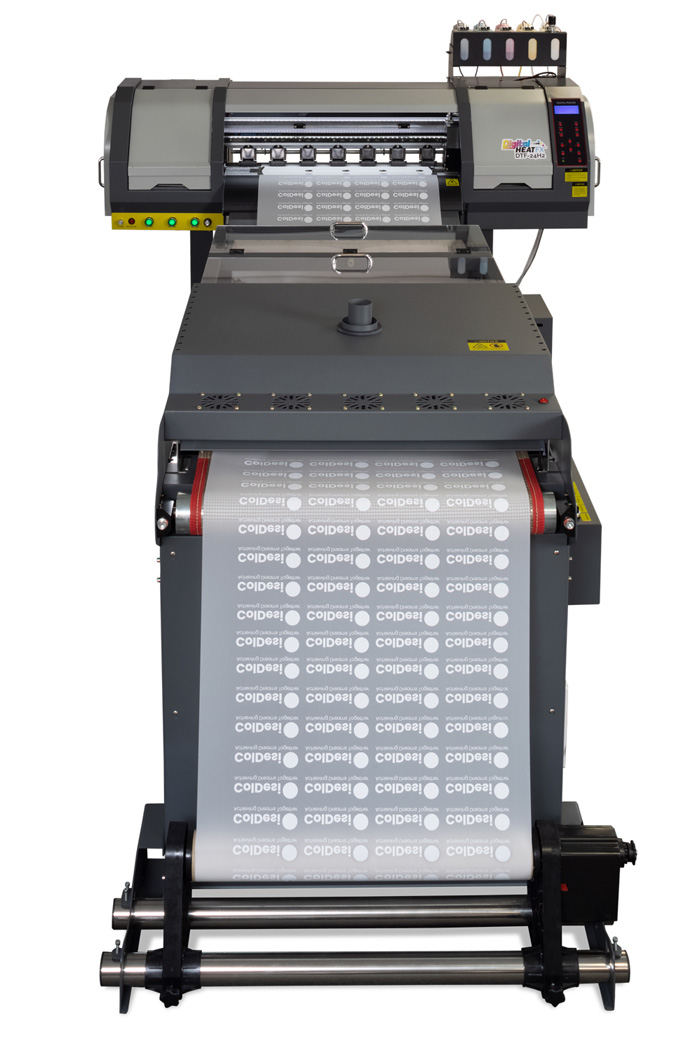
There are only a few things that a direct to film printer and direct to garment printer have in common:
- You can make custom apparel with both.
- They use liquid inks instead of toners or screen print inks (all 3 are vastly different)
- Both appeal to larger custom t-shirt and on-demand personalization businesses.
But they have more differences than similarities.
DTF is a transfer printing system. So, while the finished good that comes out of a DTG is a t-shirt, the DTF produces a transfer.
And that means that you measure how fast a DTG printer is by how many shirts it can produce in an hour. But the speed of a commercial direct to film printer is better measured in square inches per minute.
However -that’s a tough concept to wrap your head around if you’re not used to it so here’s a quick comparison:
How Fast is a Direct to Film Printer?
We printed 500 2” x 4” ColDesi Logo transfers on the direct to film printer.
It took about 15 minutes. Fifteen minutes.
Fifteen MINUTES!!
You use a heat press machine to prepress the shirt for about 5 seconds, then apply the transfer to a shirt. That takes 10 seconds.
Ten SECONDS.
1 hour = 3,600 seconds
:30 per finished shirt – this is a gross estimate that includes heat press time, shirt on and off the heat press and a bit for cooling.
With a little hard math, we can estimate that the Direct-to-film printer would print 120 of those logos in under 4 minutes.
So, 1 hour – 4 minutes = 56 minutes of making-shirts time.
3,360 seconds / :30 processing = 112 shirts
Already printed the logos. That’s 3,600 seconds / :30 processing = 120 shirts per hour.
When DTF is BETTER than DTG
Commercial DTF Printers are Key.
All of the comparison numbers and convenience of mass-producing dtf transfers are in the high-volume machines.
Single sheet, aftermarket manufactured style dtf systems are far less efficient and have more steps.
There are a few reasons for that:
An Epson color printer converted to be a direct to film machine still prints 1 sheet at a time.
That’s inherently slower than printing on a 24” roll. A commercial printer is inherently faster.
And obviously, buying dtf film one sheet at a time is much more expensive per square inch.
That Epson based dtf printer requires an extra step.
ColDesi’s direct to film printer applies the adhesive powder to the film automatically. It’s built into the dryer part of the print process.
A converted printer requires you to print the transfer, then apply the powder manually. Kind of a “shake and bake” method where you pour the powder onto the film and spread it around to make sure you have good coverage.
Automatics application of the powder is consistent and even. Manual is not, so you may not get the same performance every time.
When DTG is BETTER than DTF
DTG printing is still king in 2 different circumstances.
Choosing Between DTG and DTF
But to know if it’s right for you and your business you should talk to a Pro that knows both.


